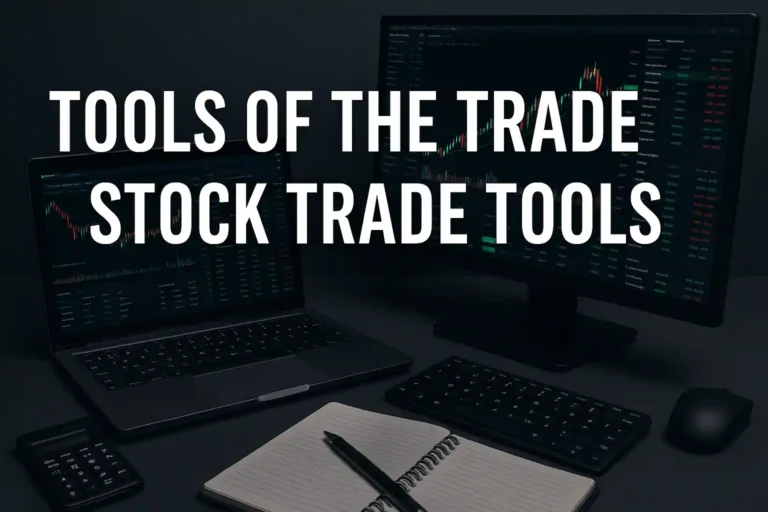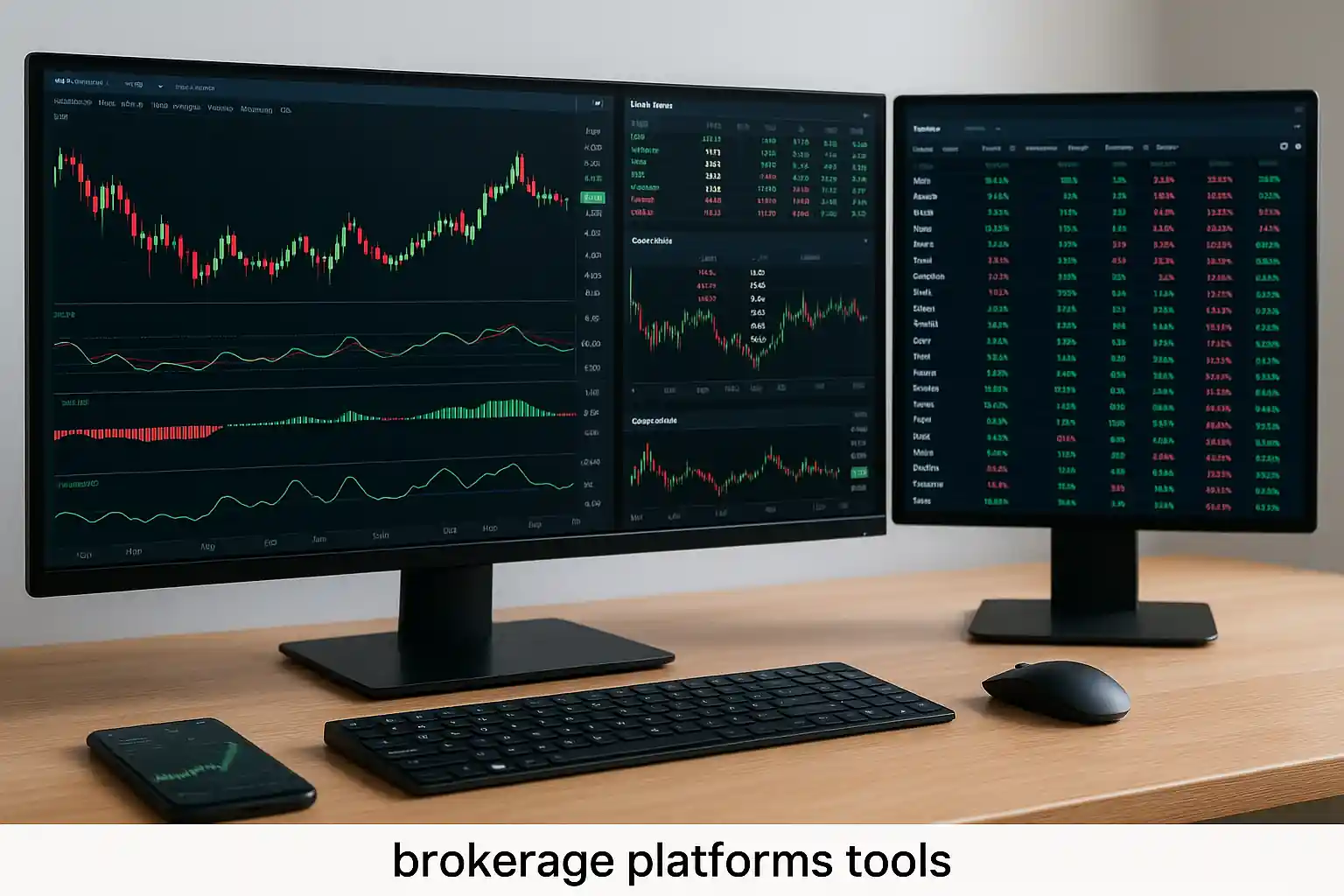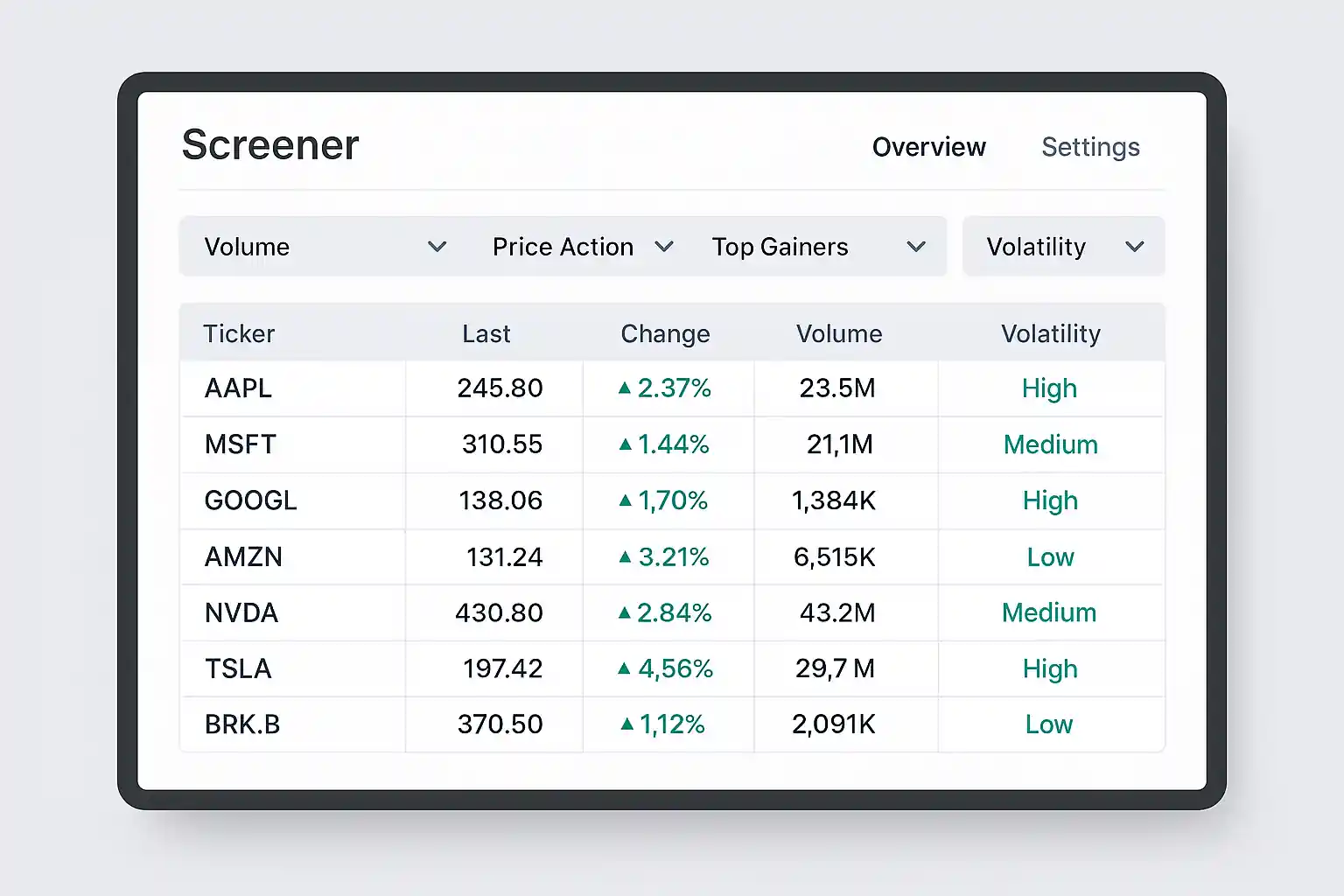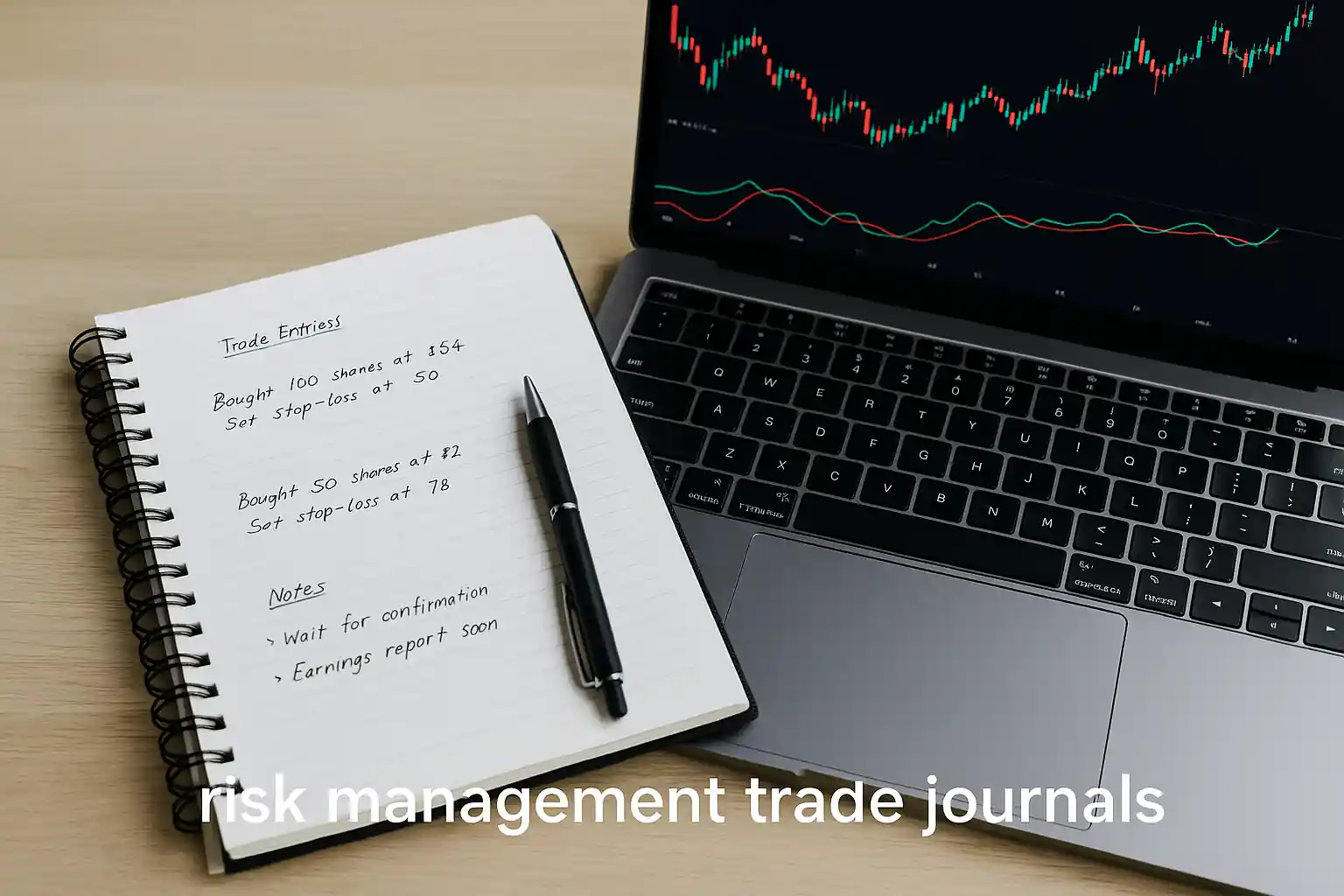
SK Tools of the Trade – Stock Trade Tools
Why Stock Trading Tools Matter in 2025
2025 isn’t like any other trading year—markets are evolving fast with the rise of AI, high-frequency trading (HFT), and global economic uncertainty. If you’re trading without modern tools, you’re not just behind—you’re vulnerable.
Today’s top traders are equipped with multi-screen setups, trading bots, algorithmic filters, and custom newsfeeds. Why? Because speed and data matter more than ever. A missed alert or outdated chart could cost you your trade.
“The market is a game of probabilities—tools tilt the odds in your favor.”
— Linda Raschke, Market Wizard
Here’s what using the right tools will help you achieve:
- ✔️ React instantly to breaking news and chart patterns
- ✔️ Improve your technical accuracy using smart indicators
- ✔️ Backtest strategies for higher confidence before live trading
- ✔️ Automate alerts and reduce screen time
And if you’re wondering whether this is just hype, it’s not. Traders who rely solely on intuition or delayed data underperform compared to those using real-time screeners and analysis tools. In fact, according to multiple backtests, alert-based traders saw an average of 22% more profitability than non-tool users in volatile markets.
🎯 Real-Life Use Case
Take the example of Rachel, a part-time trader who was struggling to stay profitable. Once she subscribed to Daily Stock Picks:contentReference[oaicite:0]{index=0} and started using automated swing alerts, she turned her $4,000 account into $5,850 in just 3 months—all by acting fast on chart setups and entries she would’ve otherwise missed.
📌 Key Takeaways:
- 📊 Data is your edge—tools provide it instantly
- ⏱️ Speed kills hesitation—alerts beat manual searching
- 🧠 Smart traders use smart systems—not guesswork
Want to understand more about market psychology and fast decision-making? You’ll enjoy our deep dive into What is Shorting in Day Trading:contentReference[oaicite:1]{index=1}.
Brokerage Platforms: The Foundation of Smart Trading

Modern multi-screen brokerage trading setup showing real-time charts, order book, and watchlist on different monitors
Choosing the right brokerage platform can be the difference between seamless execution and constant frustration. In today’s fast-paced market, traders need platforms that are not only fast but also feature-rich and customizable.
Top-rated platforms like TD Ameritrade’s Thinkorswim, Interactive Brokers (IBKR), and Webull offer real-time data, advanced charting tools, and reliable execution — all of which are critical for both day and swing traders.
“My switch to IBKR cut my trading costs in half and gave me better margin control.”
— John M., full-time swing trader
✅ Pros & ❌ Cons:
- ✅ Commission-free trades (on many platforms)
- ✅ Advanced order types & hotkeys
- ❌ Steep learning curve for beginners
- ❌ Can feel overwhelming with too many features
📊 Real Example:
Many traders in the Swing Trading Chat Room:contentReference[oaicite:0]{index=0}report that platforms with customizable alerts like Thinkorswim have dramatically improved their entry and exit precision.
📌 Key Highlights:
- 📈 Access to real-time level 2 data and advanced charting
- 🔐 Secure account protection with two-factor authentication
- 🧰 Tools for swing, options, and margin trading
Want to see how traders combine broker platforms with strategy tools? Dive into our article on Swing Trading Alerts:contentReference[oaicite:1]{index=1}for a practical workflow.
Charting Tools & Technical Analysis Software
Technical analysis is the heart of precision trading, and charting tools are your scalpel. From detecting breakouts to measuring trend strength, modern charting platforms give traders the power to make smarter, faster decisions based on data — not emotion.
The most widely used platforms in 2025 include:
- TradingView – cloud-based, highly customizable charts
- TrendSpider – automated trendline and pattern detection
- MetaStock – favored for deep backtesting and forecasting
“Technical analysis doesn’t predict the future, but it helps you prepare for it.”
— Dr. Alexander Elder, author of Trading for a Living
📊 Real-Life Use Case:
Consider the case of Emily, a swing trader who caught a major move in Tesla using RSI divergence on TradingView. She spotted the setup, confirmed it with a MACD crossover, and exited before the price pulled back — a 17% profit in four days. Without the tools, she admitted, she would’ve “missed the signal completely.”
🧠 What These Tools Offer:
- ✔️ Custom Indicators for precise setups
- ✔️ Multi-timeframe analysis to align entries
- ✔️ Backtesting capabilities for refining strategies
- ❌ Learning curve — especially with automation tools
- ❌ Some premium features require subscriptions
For those focused on Swing Trading Setups:contentReference[oaicite:0]{index=0}, platforms like TrendSpider can auto-identify key levels and alert you to trendline breaks and candlestick patterns without needing to draw them manually.
🔗 External Chart Resource
📌 Key Takeaways:
- 📍 Charting platforms offer more than price tracking — they deliver edge
- 🔧 Customization is key: build your own indicators to match your strategy
- 📊 Historical data helps validate your thesis before entering a trade
Learn how pros combine these tools with volume and pattern recognition in our advanced post on Best Indicator for Swing Trading:contentReference[oaicite:1]{index=1}.
Screeners, Alerts, and Scanners That Save Time

Dashboard of a stock screener displaying real-time filters for volume, price action, and volatility
If you’re manually scanning tickers one by one, you’re already late. Screeners, alerts, and scanners give traders an edge by instantly filtering thousands of stocks based on specific technical or fundamental criteria.
Top tools like Finviz Elite, Trade Ideas, and Benzinga Pro help traders catch high-potential plays before they move. With smart filters like RSI, volume spikes, and float % changes, these platforms let you act on data, not instinct.
“Scanners eliminate guesswork — they let you focus on action, not noise.”
— Mike C., TradeStockAlerts subscriber
📈 Real Case Study:
In early 2025, a trader using custom alerts from Daily Stock Picks:contentReference[oaicite:0]{index=0}combined with a Finviz screener made a 45% ROI in just 6 trading days. His filters targeted pre-market gainers with unusual volume — one of which turned out to be WLGS, which surged over 60% intraday.
✅ Pros & ❌ Cons:
- ✅ Saves hours of manual scanning
- ✅ Customizable alerts help automate reactions
- ❌ Premium plans can be expensive
- ❌ Requires setup knowledge to avoid overload
Want to see how screeners integrate with alerts and trade planning? Check out our strategy section on Swing Trading Alerts:contentReference[oaicite:1]{index=1}.
🔗 External Scanner Tool
📌 Key Takeaways:
- ⚡ Speed matters — alerts beat reaction time
- 🎯 Targeted screeners filter winners from noise
- 🔔 Custom alerts reduce screen fatigue
Community & Educational Tools: Learn While You Trade
No trader is an island. One of the fastest ways to accelerate your progress is by surrounding yourself with a supportive trading community and continuous education. Whether it’s through chatrooms, forums, or interactive courses — learning from others’ wins and mistakes gives you an edge money can’t buy.
Some of the best educational platforms and communities include:
- TradeStockAlerts’ Swing Trading Chat Room – daily setups, signals, and trader Q&A
- Reddit’s r/stocks – market opinions and ticker breakdowns
- StockTwits – live sentiment and crowd-sourced alerts
“Learning from live trades is a thousand times faster than reading a textbook.”
— Sarah M., full-time educator & trader
📘 Real Trader Case:
One of the most inspiring stories from our Day Trading Mentor:contentReference[oaicite:0]{index=0}program involved a 17-year-old who turned a $2,000 savings account into $8,300 in 9 weeks. The key? Consistent feedback from the community, weekly accountability check-ins, and structured courses that made each lesson stick.
✅ Pros & ❌ Cons:
- ✅ Faster learning curve via group mentorship
- ✅ Real-time advice on setups and trade reviews
- ❌ Noise and distraction from unfiltered forums
- ❌ Conflicting opinions may confuse beginners
Looking for a vetted space to ask questions and follow consistent strategies? Join the Swing Trading Chat Room:contentReference[oaicite:1]{index=1}— it’s where raw ideas turn into real results.
📌 Key Highlights:
- 💬 Trading communities provide live feedback loops
- 📚 Structured education helps you build strategy, not habits
- 🤝 Peer mentorship is often faster than solo trial and error
Risk Management & Trade Journals

A trading journal open beside a laptop showing charts, with notes on trade entries and stop-loss strategy
Even the best traders lose. What separates the winners is how they manage risk and learn from each trade. That’s where risk management tools and trade journals come in — they protect your capital and sharpen your strategy.
Popular trade journal tools like TraderSync, Edgewonk, and Tradervue allow you to log entries, exits, win/loss ratios, and emotional notes. Risk calculators help position yourself correctly based on account size and stop-loss level.
“If you don’t journal your trades, you’re not trading — you’re gambling.”
— Brian Lee, Risk Analyst at Global Equities
📉 Real Case Study:
Lisa, a part-time options trader, avoided a $3,000 loss by using a position sizing calculator before entering a risky earnings play. Her trade journal reminded her of a similar mistake from months ago, stopping her from repeating history. Small habits. Big impact.
✅ Pros & ❌ Cons:
- ✅ Builds discipline through self-accountability
- ✅ Improves consistency by reviewing past trades
- ❌ Requires effort to maintain regularly
- ❌ Some tools have steep subscription fees
Want a deeper understanding of how different types of stocks fit into your risk profile? Learn more about that in Forms of Stocks:contentReference[oaicite:0]{index=0}.
🔗 External Risk Tool
📌 Key Highlights:
- 🔐 Risk management preserves your capital long-term
- 📝 Journaling trades reveals patterns and mistakes
- 📊 Consistency beats luck — track it to improve it
AI, Automation & The Future of Trading Tools
The next wave of trading isn’t human — it’s code. Artificial Intelligence and automation are revolutionizing how traders find, evaluate, and execute trades. Whether it’s scanning headlines, analyzing sentiment, or placing trades in milliseconds, modern tools are going beyond manual input.
Platforms like AlgoTrader, QuantConnect, and Capitalise.ai offer non-coders the ability to automate trade logic with natural language and connect it to real-time markets. Welcome to the age of hands-off precision.
“Retail traders who ignore AI tools will be left behind.”
— Dr. Kevin Zhou, Former Head of AI Research, Goldman Sachs
🤖 Real Use Case:
After integrating Capitalise.ai with a swing setup from Swing Trading Methods:contentReference[oaicite:0]{index=0}, Victor, a part-time trader, saw his accuracy rise 20%. The AI filtered out trades with low volume, reduced false entries, and automatically set his stop-loss once the trigger fired.
✅ Pros & ❌ Cons:
- ✅ Backtesting at scale without manual data crunching
- ✅ Speed and efficiency with zero hesitation
- ❌ Requires understanding logic and inputs
- ❌ Can amplify losses if not properly configured
As more traders embrace automation, understanding its power — and limits — becomes essential. Read our in-depth feature on How AI Is Reshaping the Stock Market:contentReference[oaicite:1]{index=1} for a full breakdown.
🔗 External AI Platform
📌 Key Takeaways:
- ⚙️ AI helps eliminate emotion and hesitation in trades
- 🧠 Smarter setups mean more consistency and fewer false positives
- 📉 Automation isn’t perfect — always supervise your strategy
🔗 Trusted Tools and Educational Resources
📘 Investopedia: Best Online Brokers of 2025
Compare features, fees, and tools across top trading platforms for stock and options trading.
📊 TradingView Blog: Strategies and Charts
Explore real-world charting strategies, community insights, and custom indicator setups.
🤖 Capitalise.ai: No-Code Trading Automation
Automate your trading strategies without coding using real-time data and conditional logic.
📈 Benzinga Pro: Real-Time Stock Scanners
Leverage powerful screeners and breaking news alerts to catch opportunities as they happen.
📺 CNBC Select: Best Trading Platforms Ranked
Get CNBC’s editorial breakdown of the best apps for beginners and active traders.